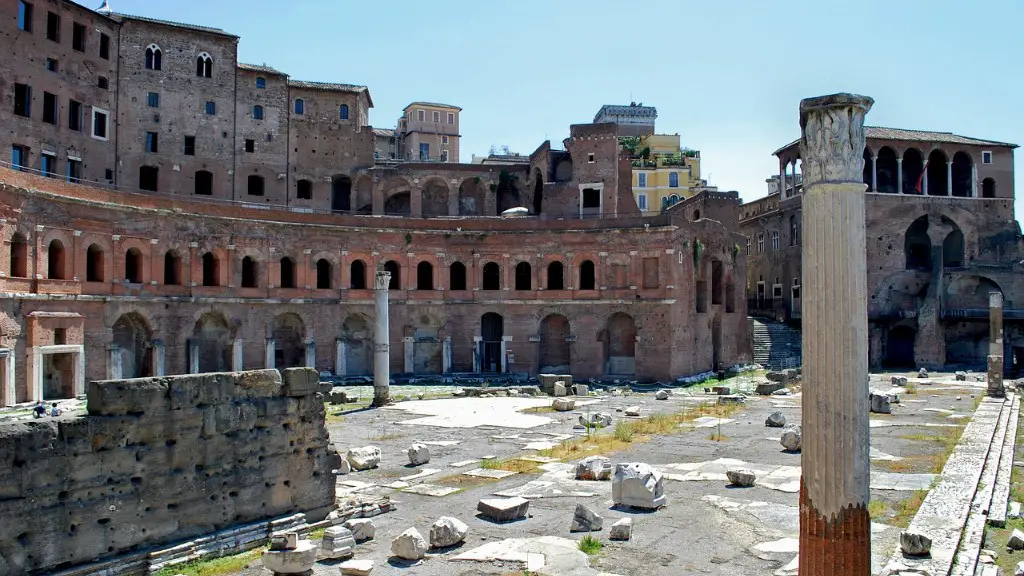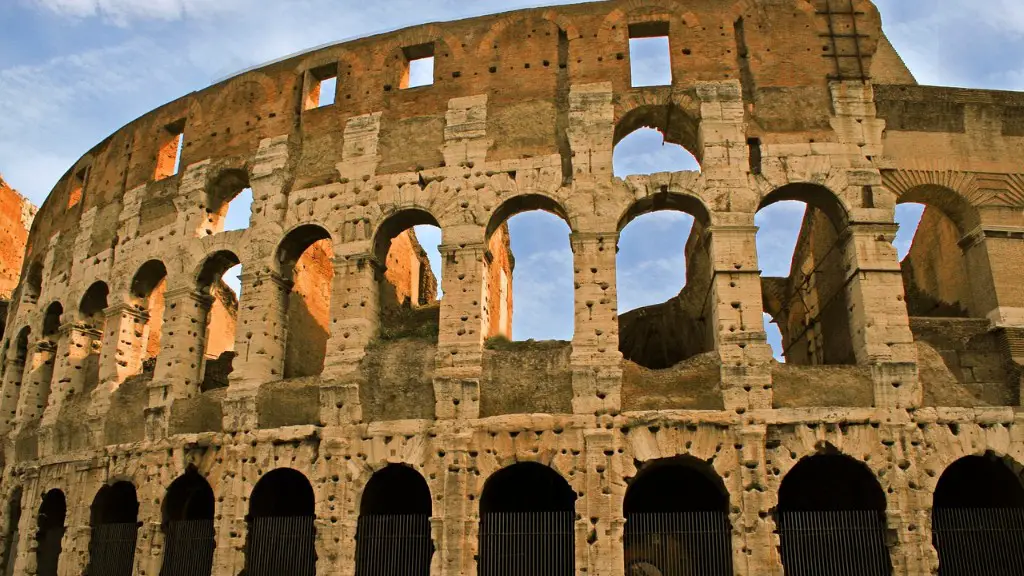Valentine’s Day Celebrated in Ancient Rome
Valentine’s Day has a long and romantic history that dates back to Ancient Rome. Today, it is celebrated across the world as the traditional day to express feelings of love and devotion to loved ones. But it wasn’t always a holiday that was focused on romance or affection between two people.
In Ancient Rome, mid-February was a festive time. It was the start of a fertility festival called Lupercalia which was celebrated annually in honor of Lupercus, the god of shepherds and fertility. During the celebrations, Roman priests would offer sacrifices at sacred sites around the city, then dress themselves in goat skins and ritualistically hold a procession around the city, slapping the hands of young women with the hides of the sacrificed goats. This ritual was intended to promote fertility and ease the pains of childbirth for women.
Historians have noted the similarity between Lupercalia and Valentine’s Day. The similarities range from pairing up couples by chance to a focus on the romantic aspect. The notion of pairing up couples dates back to Ancient Roman times and was used in the Lupercalia celebrations in order to encourage union between men and women.
In 496 AD the Christian Church in Rome declared February 14th as Valentine’s Day in honor of a saint by the name of Valentine. This is thought to be the day for love, as the holiday of Lupercalia often fell around the same time. Legends surrounding the holiday include stories of St. Valentine marrying couples against the will of the Emperor and being executed as punishment. Whether these stories are true or not is unknown, but it is thought that the official declaration of Saint Valentine as the romantic patron saint of Rome solidified the holiday as one associated with love and devotion.
In modern times the holiday looks very different from Ancient Rome. Today, it involves the giving of cards, flowers, and chocolates, accompanied by romantic dinners. But the modern holiday still reflects some of the traditions of the ancient festival, such as pairing off couples, whether it’s to travel together or gather in groups to celebrate.
Events In Ancient Rome’s Culture
The culture of Ancient Rome was heavily influenced by events that took place in the city’s history. The most important of these events was the transition from monarchy to republic, which took place in 509 BC. This ushered in a new period of political instability, as Rome fought off invasions and internal political unrest due to the lack of a reigning king. Despite this, the period was one of great economic prosperity as Rome established colonies and trade networks throughout the Mediterranean.
At the same time, religious celebrations were an important part of Roman life. Romans celebrated various gods for all aspects of life, from war, fertility and family, to love and justice. One of the most important of these festivals was the Lupercalia, a fertility celebration that took place on February 15th of each year. It was a day full of festivities and ritual sacrifices to the gods and it was believed that these ceremonies would bring bountiful harvests and good luck in the coming year.
The Decline of Lupercalia
With the rise of Christianity in Rome, the celebration of the Lupercalia was largely abolished. The Christian Church saw the pagan festival as being too “worldly” and sought to remove any associations between the holiday and anything potentially related to polytheism.
As a result, the Church declared St. Valentine’s Day as the official day of love and friendship. Although this day was celebrated differently from the original Roman festival, and focused more on the ideals of fidelity and friendship, many of the traditions remained the same. This included the notion of pairing off couples and the celebration of union between the sexes.
Impact On Modern Valentine’s Day
Today, the celebration of Valentine’s Day has taken on a form similar to what is celebrated in Ancient Rome. Although the focus is now on romantic love rather than fertility, many of the same rituals and traditions remain. This includes gift-giving and a focus on quality time.
Although modern Valentine’s Day is now a commercialised holiday, its roots can still be found in the Ancient Roman festival of Lupercalia. Despite the Church’s attempts to abolish it, the holiday continues to exist with many of the same traditions from Ancient Rome.
Origins Of Popular Valentine’s Day Traditions
One of the most popular Valentine’s Day traditions is the giving of cards. This custom has been traced back to the Middle Ages, when people would send love letters and verses to their loved ones. Over time, these became more elaborate and in the late 1700s commercially printed Valentine’s cards began to appear in Europe.
In the United States, the custom of sending flowers to one’s loved one came about during the Victorian era. This was a time when the public began to embrace the notion of the romantic celebration of love. At the same time, flowers became symbolic of different messages and sentiments. This led to an explosion of commercial flower business, which still exists today.
Another common tradition on Valentine’s Day is the giving of chocolate. This practice dates back to the 16th century when a woman named Anna, the Duchess of Bedford, acquired a taste for chocolate. She discovered that drinking chocolate in the evening made it easier for her to rest, and soon the tradition spread throughout Europe.
Romantic Gestures Over Time
Over the centuries, the tradition of celebrating Valentine’s Day has grown more and more romantic. In the 1900s, the popular gesture of gifting roses and chocolates became widely accepted. In addition, the exchanging of small tokens of affection such as necklaces, earrings, and charms became increasingly popular. Now in the 21st century, we have seen the rise of grand romantic gestures such as skywriting and flash mobs.
The tradition of exchanging gifts has remained an integral part of the holiday for centuries. But beyond the physical gifts, it’s the sentiment behind them that matters. Couples now enjoy a range of activities such as going on trips together or attending romantic events, while the focus is on spending quality time together.
The Meaning of Valentine’s Day
The true meaning of this holiday is often debated. For some, it is a day to express love, while for others it is a day to celebrate friendship. Whatever the case may be, it is often thought of as a time to reflect on what it means to love and be loved.
Throughout the years, Valentine’s Day has been a source of inspiration for poets and songwriters. This holiday has fostered a community of shared experiences and collective admiration for love in all its forms. As a result, it has firmly established its place in our culture as the ultimate day to celebrate love.
Conclusion
Valentine’s Day has a long and romantic history that dates back to Ancient Rome, with the Roman fertility festival of Lupercalia serving as its beginnings. The holiday today looks very different from its Ancient Roman roots, but its traditions still remain, such as the notion of pairing off couples, gift-giving, and a focus on romance.
In modern times, the holiday has become a symbol of love and friendship, and it is a day for people to reflect on the many forms of love, be it romantic or platonic. While it has come to be a highly commercialized holiday, the true meaning of Valentine’s Day still remains, and it is celebrated by people all over the world.


